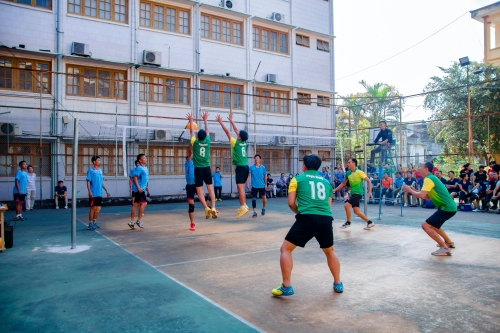Fouls in Volleyball

As with any competitive game, there are rules in place to ensure fair play and maintain the integrity of the sport.
Fouls in volleyball occur when a player or team fails to comply with the rules set forth by the sport’s governing bodies, such as the International Volleyball Federation (FIVB) or the National Collegiate Athletic Association (NCAA). These Volleyball Violations can result in penalties, loss of points, or even disqualification from the match.
Handling Fouls
Illegal Hit
An illegal hit, also known as a lift or a carry, happens when a player contacts the ball and fails to cleanly strike it. This occurs when a player holds the ball for too long or allows it to come to a rest in their hands. The referee will judge whether a hit is illegal based on the smoothness and speed of the contact.
Lift or Carry
Similar to an illegal hit, a lift or carry refers to the action of a player who holds the ball momentarily or guides it with their fingers. This foul typically occurs when a player attempts to control the ball using their palms or fingers instead of cleanly hitting it.
Double Hit
A double hit takes place when a player touches the ball consecutively with two different parts of their body, such as their hands and forearms, without the ball touching any other player or the net. To avoid a double hit, players must make sure the ball only makes contact with a single body part during each touch.
Four Hits
In volleyball, a team is allowed a maximum of three hits before the ball must be returned over the net. If a team exceeds this limit and a fourth hit is made, it results in a foul. Each hit should be distinct and purposeful, contributing to the team’s attempt to score or maintain possession.
Net Violations
Net Touch
A net touch foul occurs when a player makes contact with the net during play. This includes touching the net with any part of the body, clothing, or hair. Players must be cautious not to interfere with the net while making plays, as it can disrupt the game and give an unfair advantage.
Net Penetration
Net penetration refers to a player crossing the vertical plane of the net into the opponent’s space. While it is allowed to reach over the net to block or attack the ball, touching the opponent’s court or interfering with their play is considered a violation. Players must respect the net’s boundaries to maintain fair competition.
Foot Fault
A foot fault happens when a server or a player who is serving steps on or over the end line while making a serve. To execute a proper serve, the server must release the ball cleanly and maintain contact with the ground behind the end line until after the ball is struck. Stepping on or over the line before completing the serve results in a foul.
Back-Row Attack
In volleyball, there are specific rules regarding back-row players attacking the ball. If a back-row player jumps from behind the attack line and attacks the ball while in front of the line, it leads to a foul. This rule is in place to prevent an unfair advantage for the attacking team by ensuring that the front-row players have the primary responsibility for attacking.
Centerline Violation
A centerline violation occurs when a player crosses the centerline of the court and interferes with the opposing team’s play. The centerline serves as a boundary to separate the two teams and players should avoid crossing it to maintain fair gameplay.
Foot Under the Net
Stepping on or under the centerline and into the opponent’s court with any part of the foot is a foul known as “foot under the net.” This rule aims to prevent collisions and maintain player safety during the game.
Ball In/Out
The ball in/out foul occurs when a player or team fails to correctly judge whether the ball has landed within the boundaries of the court. The ball must fully cross the plane of the boundary lines to be considered in. If the ball lands outside these lines, it is deemed out, resulting in a foul or point for the opposing team.
Substitution Errors
Substitution errors occur when a team fails to follow the proper procedures for player substitutions. Each team is allowed a limited number of substitutions per set or match, depending on the rules in play. Failure to adhere to these rules can result in a penalty or loss of points.
Delay of Game
A delay of game foul is called when a team intentionally slows down the pace of the game or delays the restart of play. This can include actions such as excessive timeouts, unnecessary substitutions, or deliberately stalling between plays. The purpose of this rule is to ensure the game progresses smoothly and maintains its dynamic nature.
Unsportsmanlike Conduct
Unsportsmanlike conduct refers to behavior that violates the principles of fair play and respect for opponents, officials and the game itself. This can include actions such as arguing with the referee, using offensive language, or displaying aggressive behavior towards opponents. Unsportsmanlike conduct fouls are taken seriously and can lead to penalties, ejections, or disqualification.
Conclusion
Understanding the various fouls in volleyball is crucial for players, coaches and fans to appreciate the sport’s integrity and fair competition. By adhering to the rules and regulations, teams can engage in thrilling matches while showcasing their skills and teamwork. Respect for the game, opponents and officials ensures a positive experience for everyone involved.


